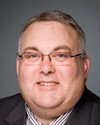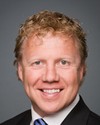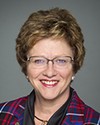Thank you very much, Mr. Preston. That's very true. It is a pleasure to be here. Thank you.
Mr. Dykstra and Mr. Allison have outlined some of the concerns that they have, and certainly there were concerns expressed in the hearings in Niagara Falls, at which I have to say I was the only MP who actually attended, as did two members of the provincial Parliament, one from the Niagara Falls riding who is a Liberal and one from the Welland riding who is also a New Democrat, with 11 other presenters.
For the Niagara Falls riding, as far as the mayors and councils of Niagara-on-the-Lake and Fort Erie were concerned, they were unanimous in passing resolutions that they wished to stay within the boundaries of the Niagara Falls riding, as much as Justice Valin admitted that indeed this made it a larger riding, but one that fell within the allowable limit.
Notwithstanding Mr. Allison's suggestion and the absolute fact that his riding declines in population, when one looks at the map he has the largest geographical component. In fact, he almost has half the Niagara peninsula, geographically. I'm not suggesting that this is like northern Ontario, if you're in Timmins—James Bay, but in the south it's a pretty big size. He also has four of the fastest-growing communities in the Niagara peninsula inside the Niagara West boundary, which means that it fills out over time.
Clearly, we had some suggestions for the commission. They weren't actually followed through on, but the commission came to some conclusions and changed the map. They had a second hearing in Hamilton, which also included Niagara and which I attended—I believe I was the only witness from Niagara who attended the second hearing—and at that point I suggested to the commission that I was fairly satisfied with what they had done.
They changed it again by moving the boundary in St. Catharines more towards the south, if you will, which more resembled what Mr. Dykstra's riding was—the previous boundary as it is now, minus a sliver on the west end.
My position at this point is that I am very confident and pleased with what the boundaries are as they have been shown in this iteration. So are the mayors of Welland and Port Colborne, and so are the mayors down the riverside because, of the communities of interest that the commission took into consideration, the Niagara peninsula is more of a north-south configuration, the centrepiece being down the Welland Canal.
If you actually look at it, it's Highway 406 and the Welland Canal that drive north to south. When you look at the Niagara River, which is all border communities—Niagara-on-the-Lake, Niagara Falls, Fort Erie—all have border crossings and they're all on the Niagara River. That's exactly what the commission looked at, at the end of the day.
The only last comment I'll make, Mr. Chair, is that the south end of St. Catharines has been part of the configuration of the Welland—Thorold riding for about four decades. So, speaking to the suggestion that somehow the south end of St. Catharines isn't part of the Welland riding, the distinction is that the folks in St. Catharines, and indeed in Thorold and Port Colborne, don't like the name “Welland”. What they want is “Niagara Centre”, and they're quite happy to hear that we're going back to being Niagara Centre. It's really the name Welland that disturbs the folks in those other communities, not actually Niagara Centre.
I'll leave it at that. Thank you, Chair.






